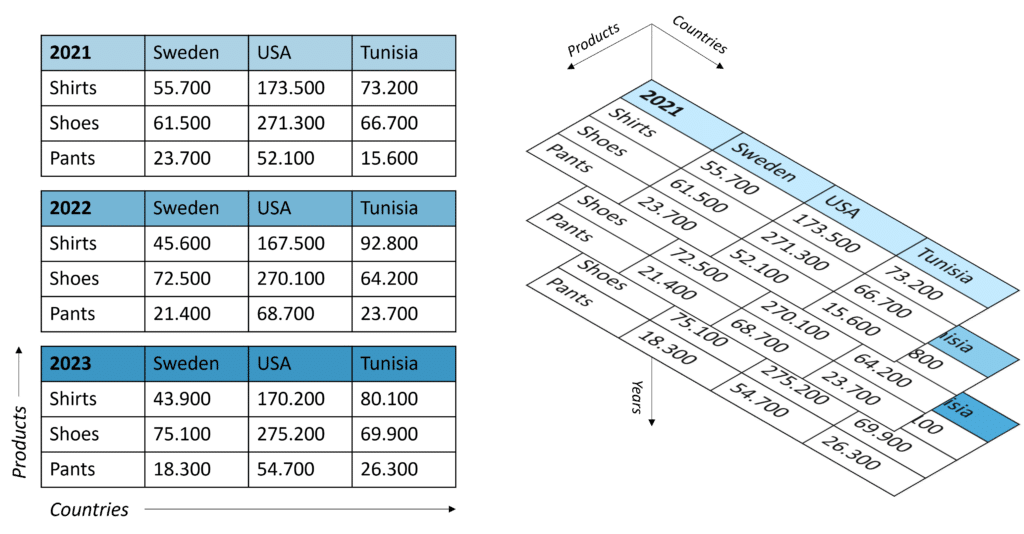Data Cubes in General Copy
When you think about data, most likely tables come to your mind, with features organized in rows and columns. Data cubes overcome these constraints: they are a data structure that allows to represent data in more than only two dimensions. Generally a data cube is a multi-dimensional data structure. Even though it’s called a cube, it is n-dimensional. A 1-d data cube is an array. A 2-d data cube is a table. A 3-d data cube is a cube. A 4-d data cube is hard to visualize. A feature within a data cube is explained by multiple dimensions and has a certain value. An example would be: A company has sold multiple products (Shirts, Shoes, Pants), in different countries (Sweden, USA, Tunisia), in different years (2021, 2022, 2023).
- Dimensions: Products, Locations, Years
- Labels of the Dimensions:
- Products: Shirts, Shoes, Pants
- Countries: Sweden, USA, Tunisia
- Years: 2021, 2022, 2023
- Feature: Revenue
- Value: $

This concept can be applied to many fields such as economics, medicine, biology, and also very well to EO data!

